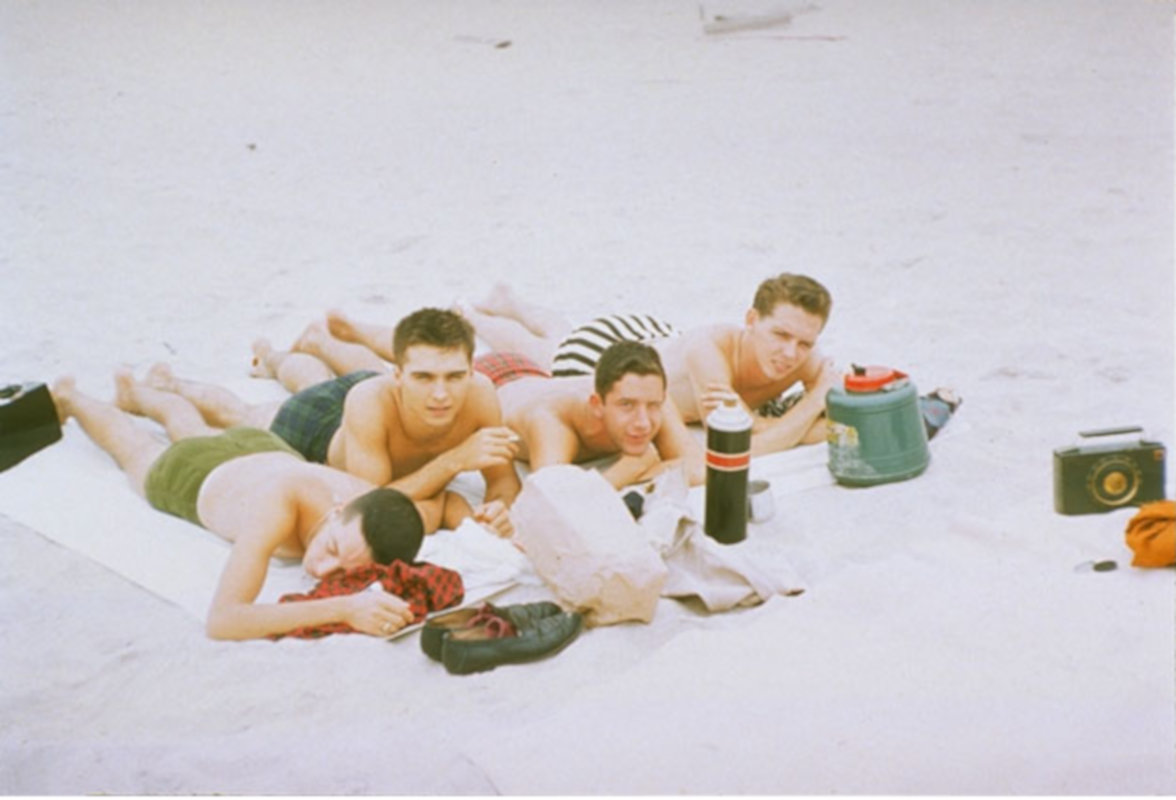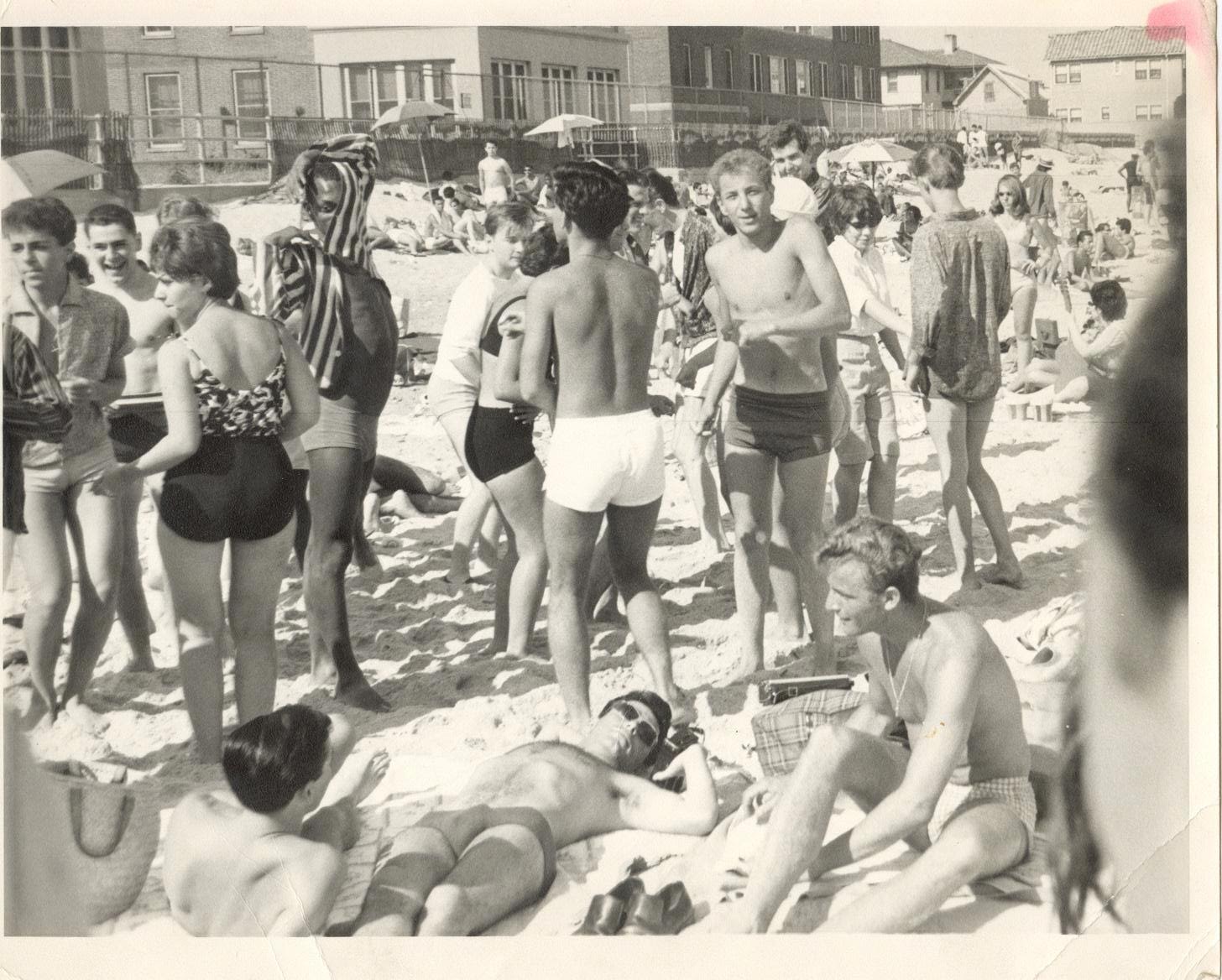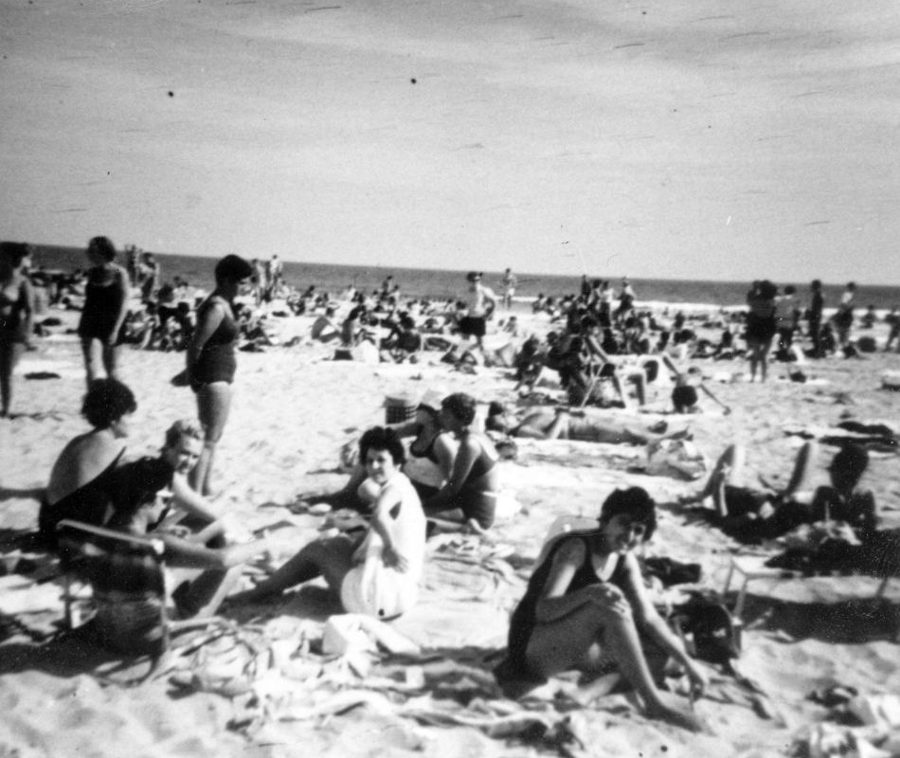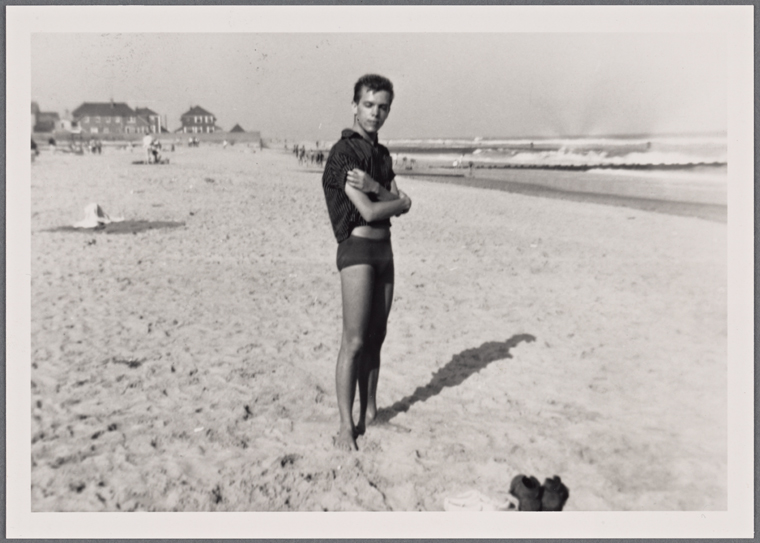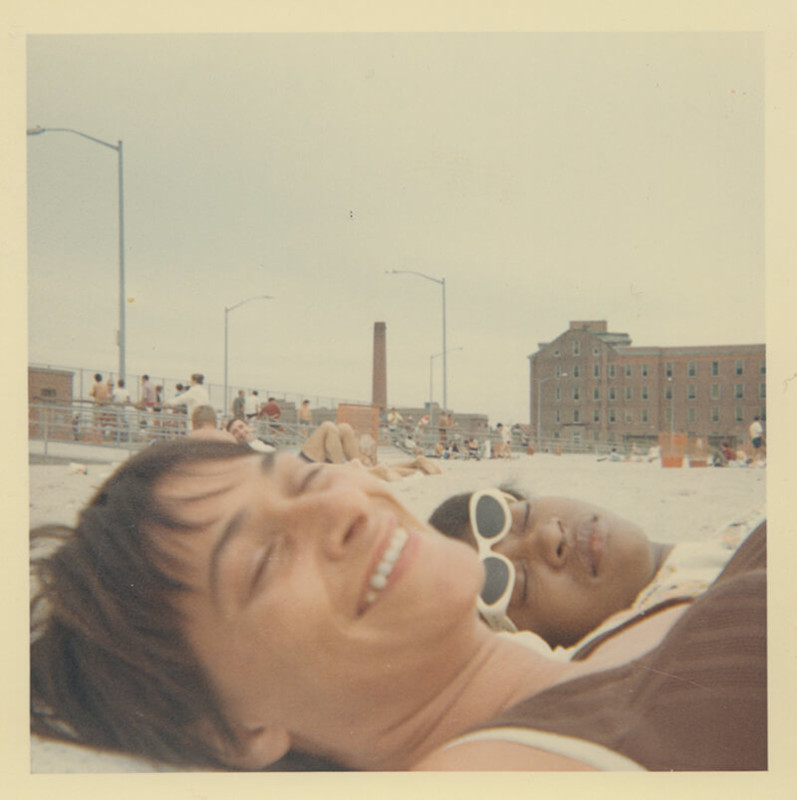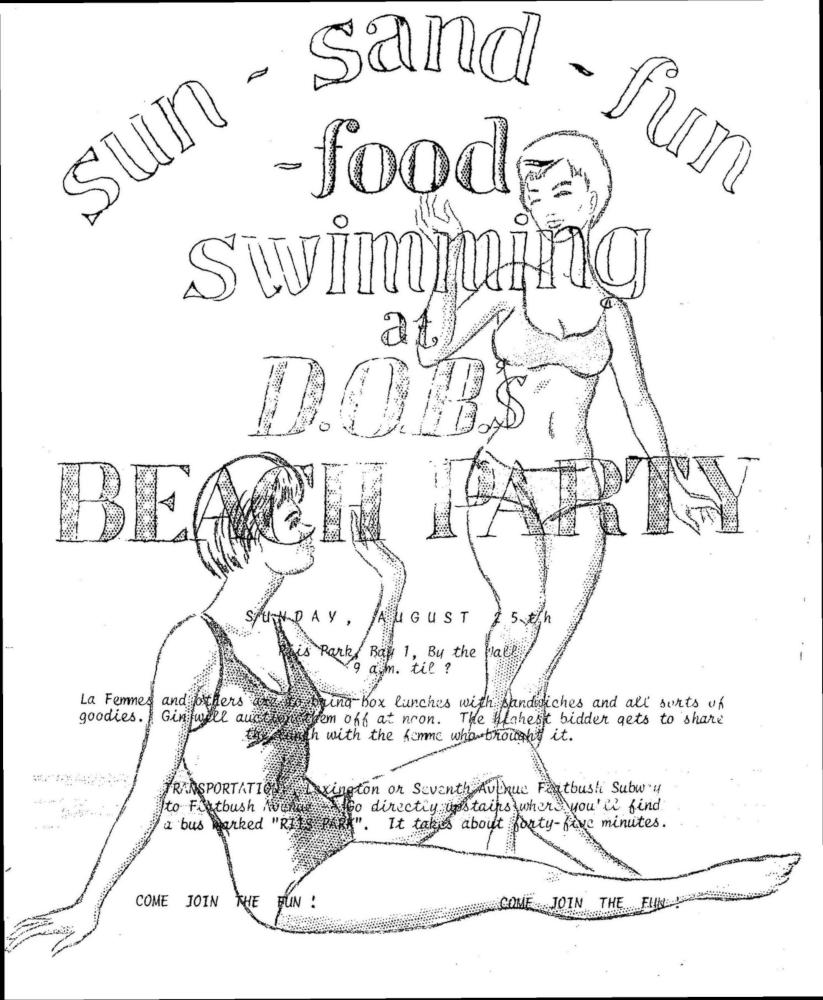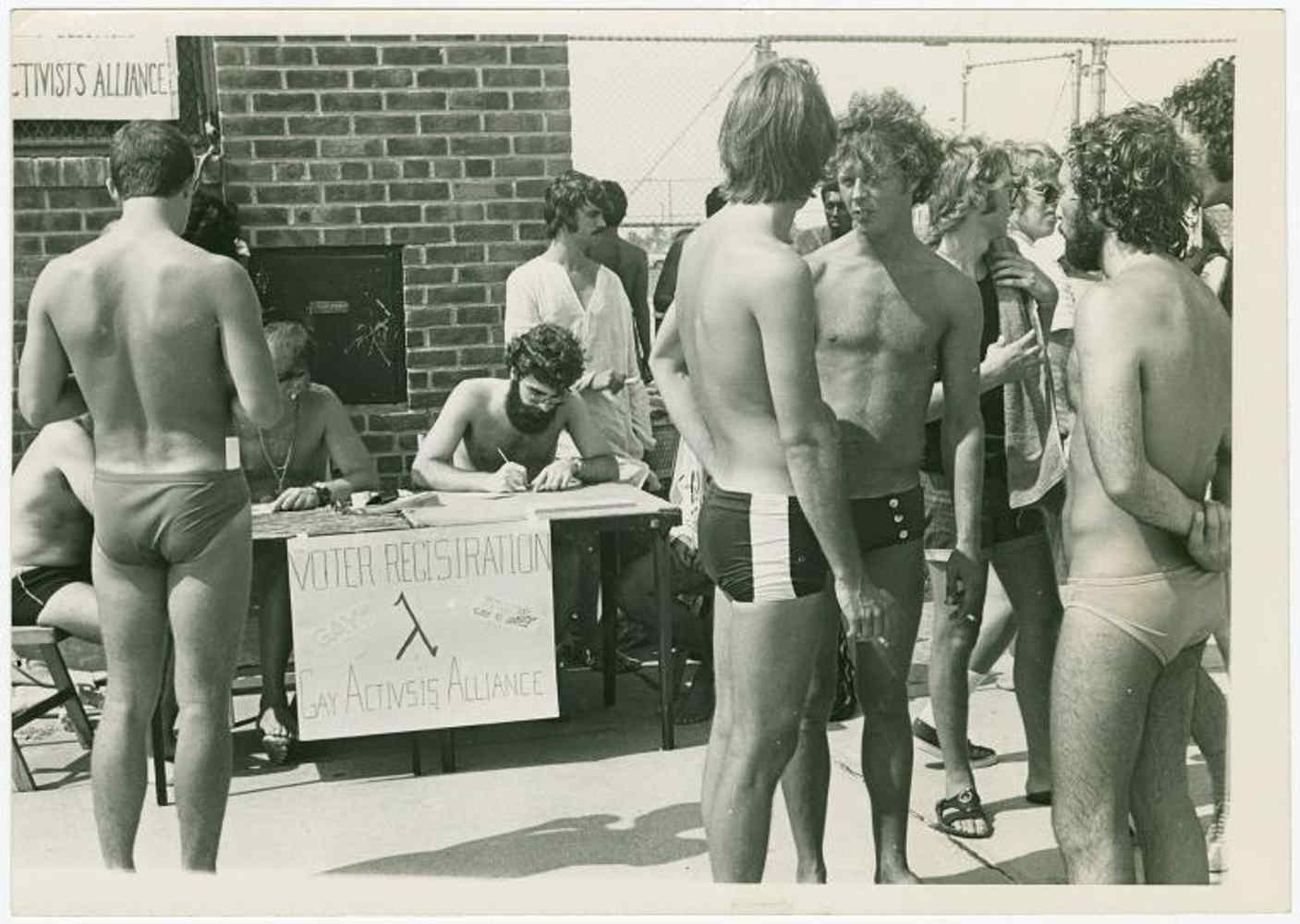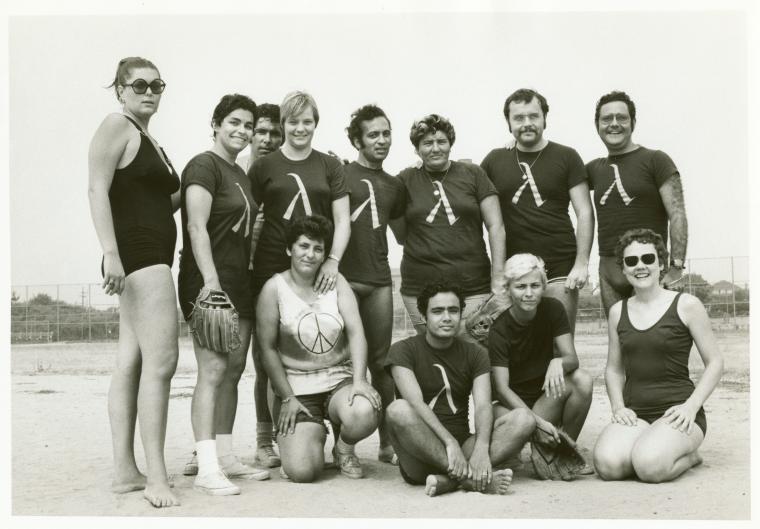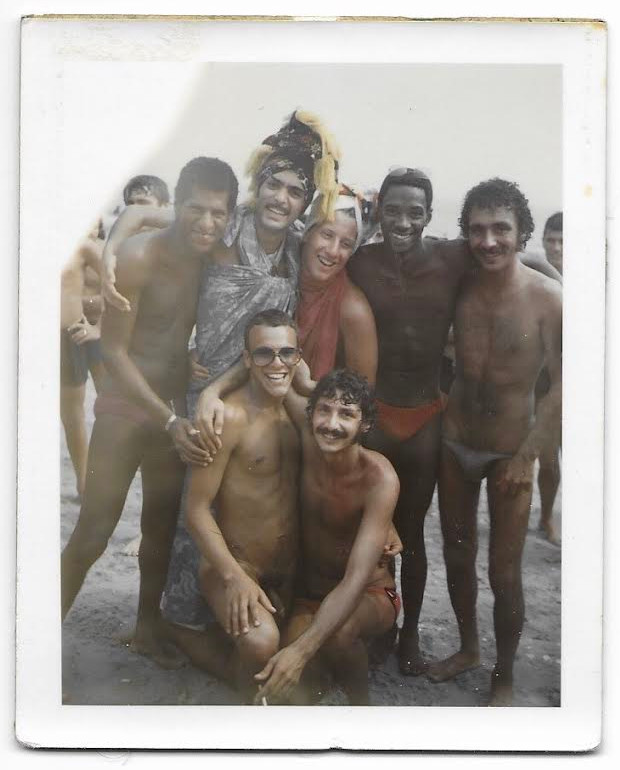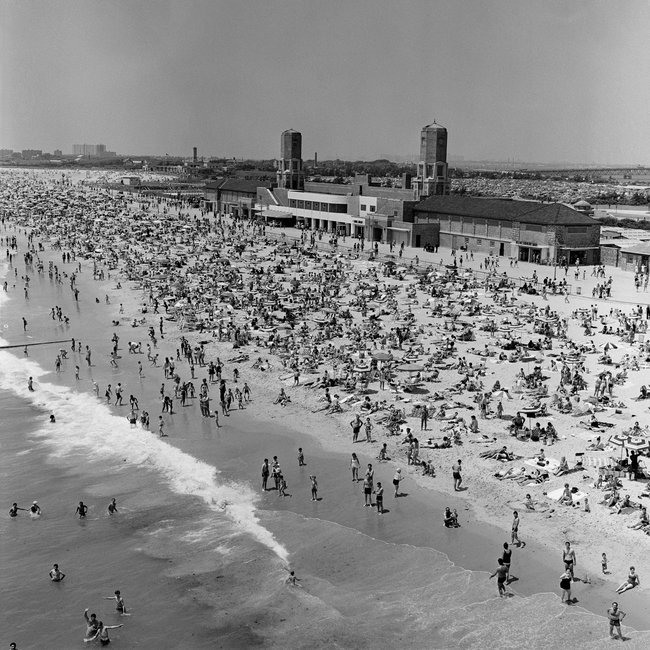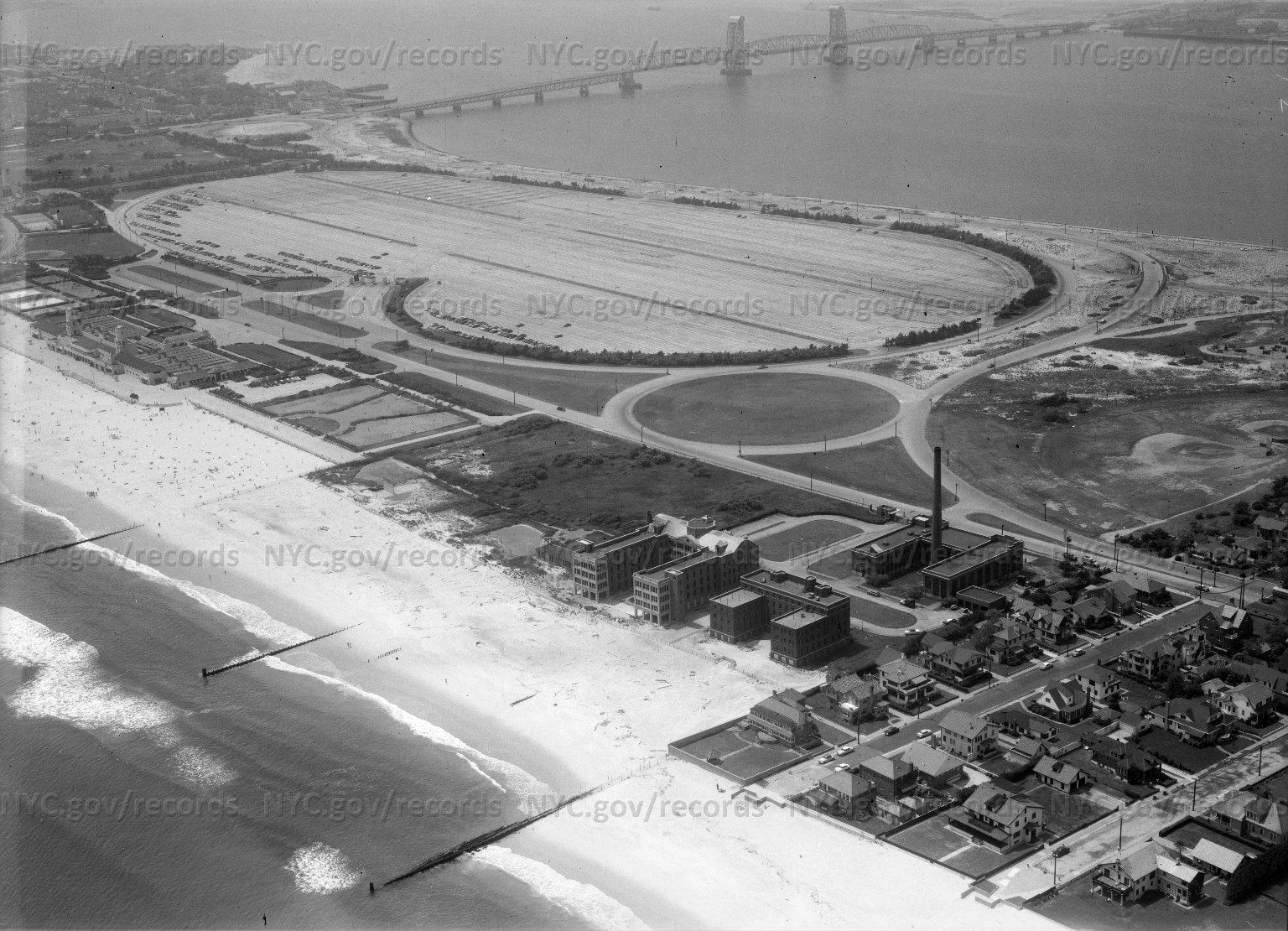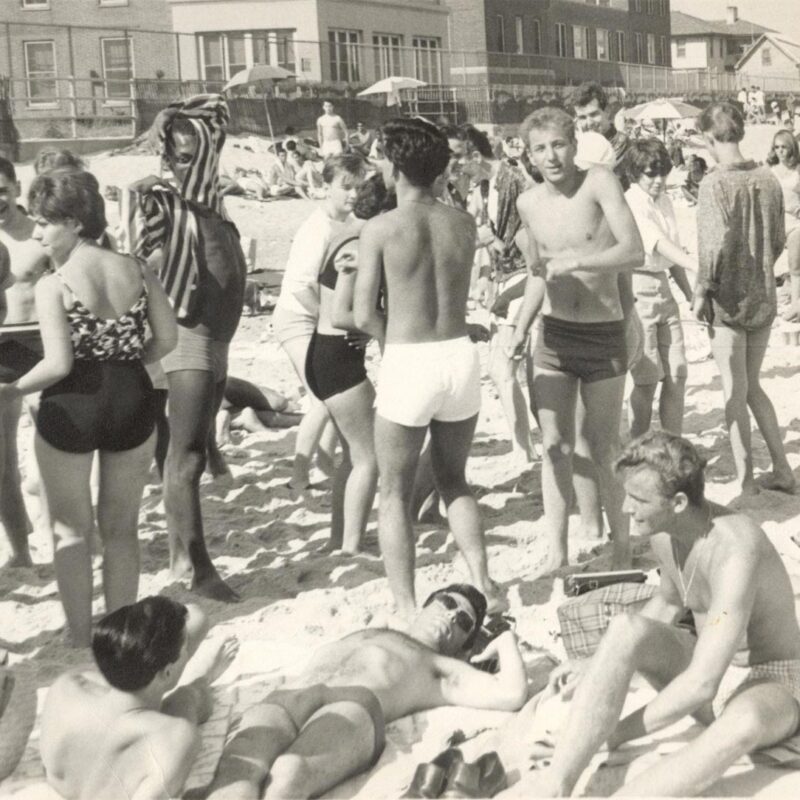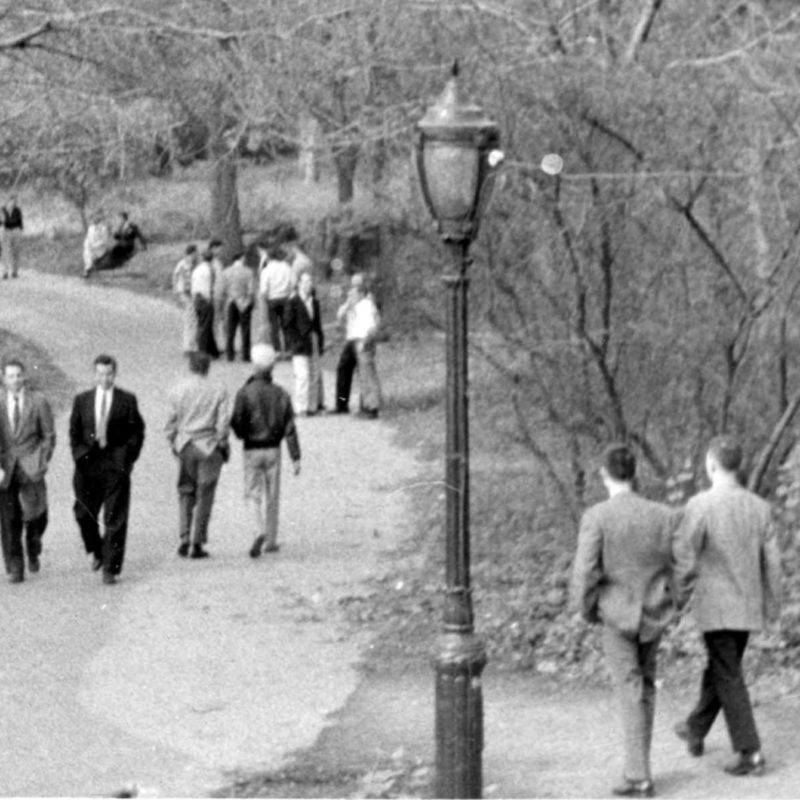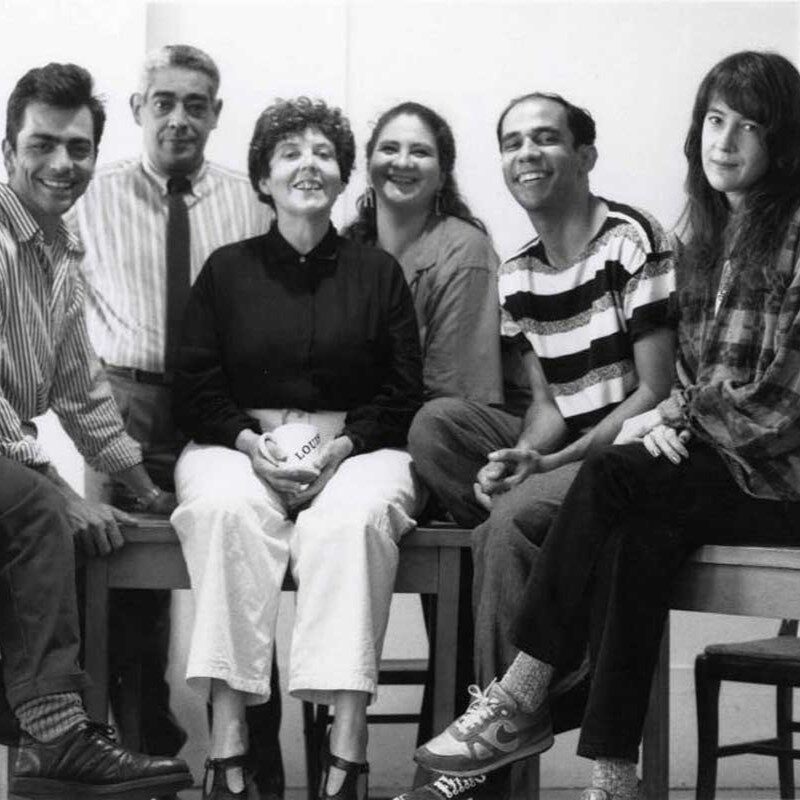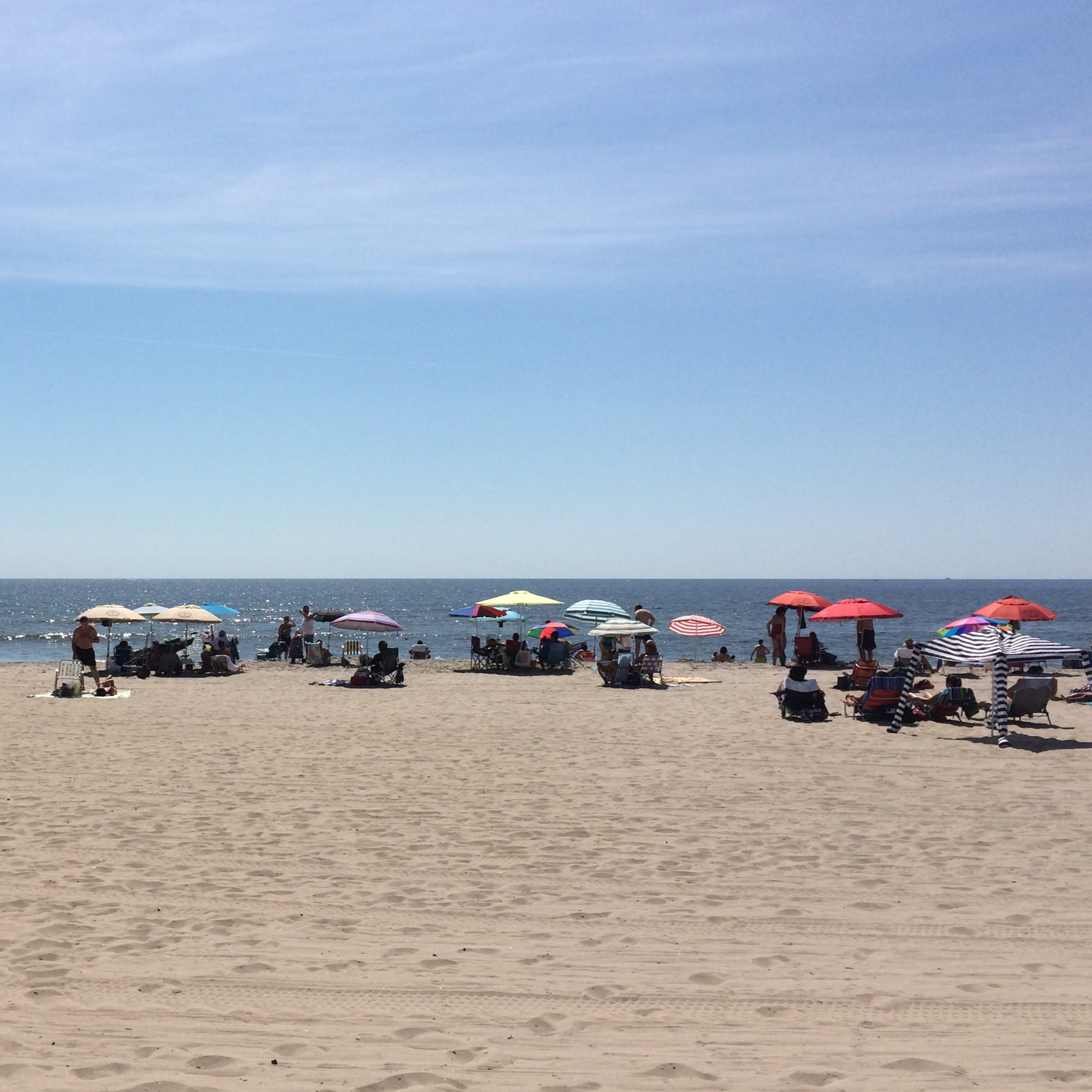
Riis Park Beach
overview
The isolated eastern end of the beach at Jacob Riis Park has been a location for LGBT sunbathing and cruising since the 1940s.
Historically, it has been the most popular gay beach in New York City.
History
Located on a mile-long section of Rockaway Peninsula in Queens, Jacob Riis Park was named after the turn-of-the-20th-century social reformer and photojournalist. Historically, New York City beaches have been popular public social gathering places for the LGBT community where they claimed certain sections as their own.
In the 1930s the beach was redesigned under the direction of New York City Parks Commissioner Robert Moses. When the park reopened in 1937, Moses hoped that it would be a more democratic version of Jones Beach due to its easy accessibility by public transportation and cars. By the 1940s the most eastern end of the beach had become a documented well-known destination for mostly white gay men to sunbathe and cruise. Lesbian women also claimed a nearby area of the beach by the 1950s. By the 1960s, this area became increasingly popular with a diverse LGBT presence including African American and Latino/a men and women.
During the 1960s this area of the beach became clothing optional and was affectionately referred to as “Screech Beach” due to the gay presence. The LGBT Community Center National History Archive has a collection of photographs of the beach from this period. According to future gay rights leader and bookshop owner Craig Rodwell, gay men were constantly harassed and given citations by police over alleged violations of the size of their bathing suits. Rodwell was arrested when he attempted to object to this around 1962.
One of the best Gay Rivieras in the world…so crowded, nudes go unnoticed.
As a site of activism, the beach was the location of a 1971 voter registration drive led by the Gay Activists Alliance (GAA), one of the first gay rights groups to form after the 1969 Stonewall Uprising. When the park was transferred to the National Park Service in 1972 with the creation of the Gateway National Recreation Area it became much more difficult to sunbathe nude. In 1981, the Jacob Riis Park was listed on the National Register of Historic Places.
Though, at times, beachgoers have dealt with homophobia here over the years, the area still maintains its queer identity as one of New York City’s popular and diverse LGBT public spaces.
Entry by Ken Lustbader, project director (March 2017; last revised December 2022).
NOTE: Names above in bold indicate LGBT people.
Building Information
- Architect or Builder: Aymar Embury II (architect), Clinton Loyd (New York City Department of Parks Chief of Architectural Design), Gilmore Clarke of Clarke & Rapuano (landscape architect)
- Year Built: 1936
Sources
Daniel Hays, “They Seek a Coverup at Riis Park,” Daily News, May 29, 1980.
George Chauncey, Gay New York: Gender, Urban Culture, and the Making of a Gay Male World, 1890-1940 (New York: Basic Books, 1994).
Hugh Hagius, ed., Swasarnt Nerf’s Gay Guides for 1949 (New York: Bibliogay Publications, 2010).
Kelly Hankin, The Girls in the Back Room (Minneapolis: University of Minnesota Press, 2002).
Michael Scherker, “The Reminiscences of Craig Rodwell” (NY: Oral History Research Office, Columbia University, 1992), 1/29-33. Rodwell was interviewed in 1986.
Perry Brass, “Lost Gay New York: Riis Beach a.k.a., Screech Beach,” Queer New York June 25, 2010, bit.ly/2ex9H5z.
Petronius (pseud.), New York Unexpurgated (New York: Matrix House, Ltd., 1966). [source of pull quote]
Do you have more information about this site?
This project is enriched by your participation! Do you have your own images of this site? Or a story to share? Would you like to suggest a different historic site?
